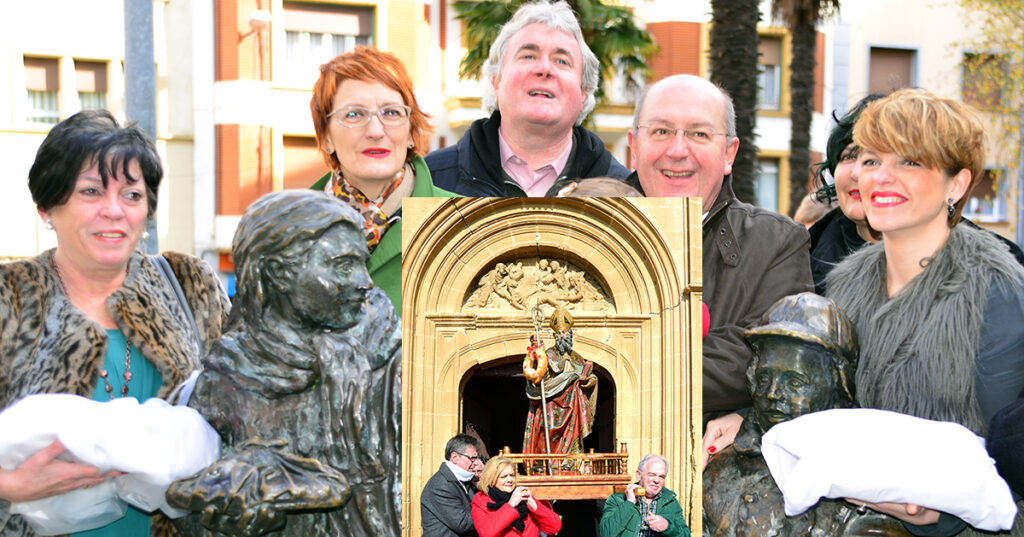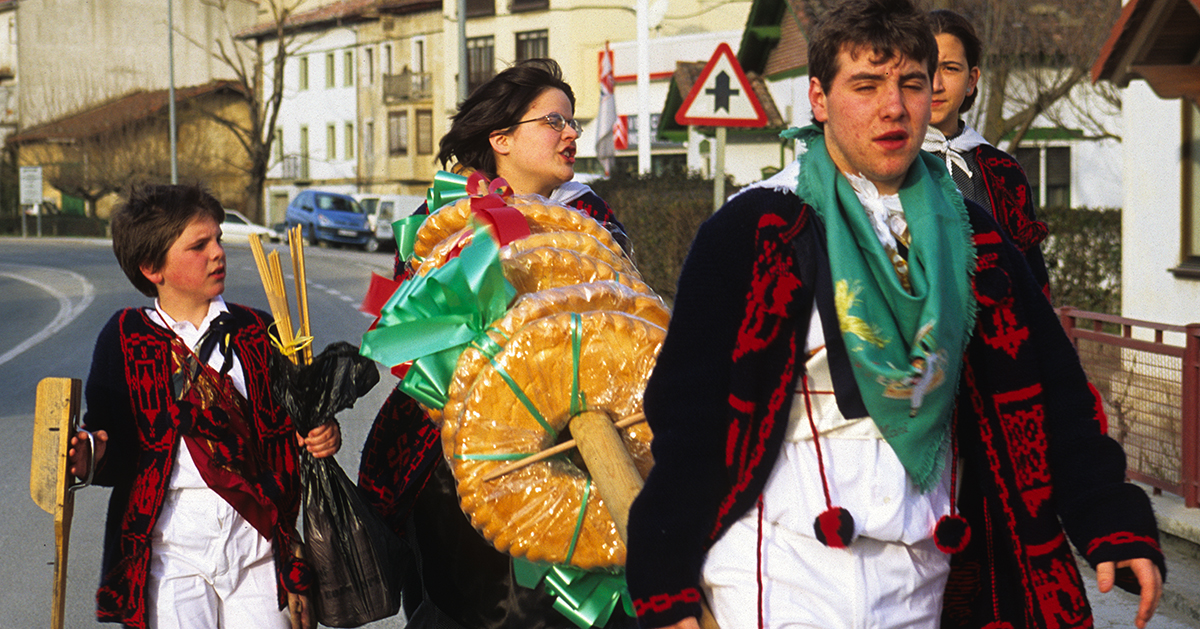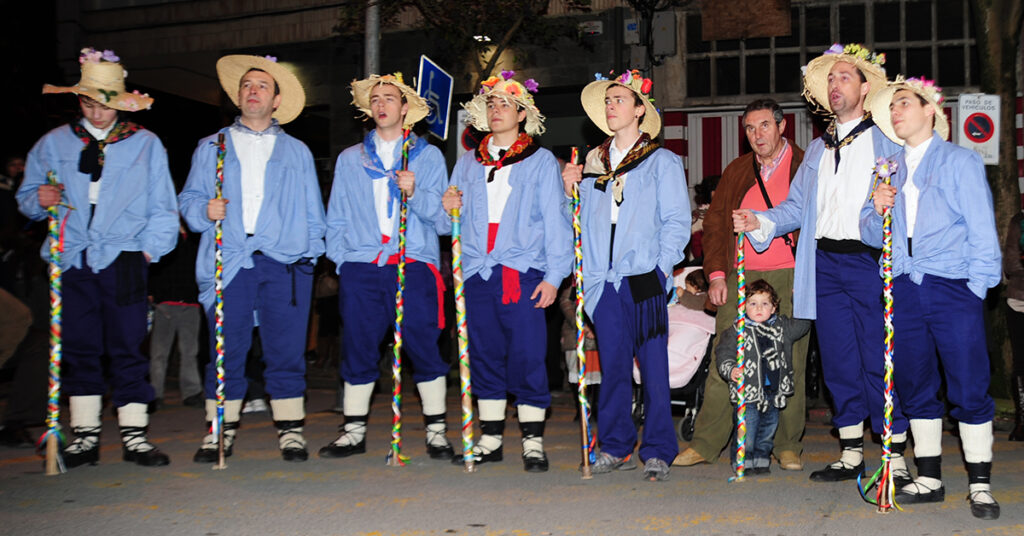Basque ethnography at a glance
Even though Carnival has been called the highlight of winter at other times in this country, the celebration of St. Agatha’s Feast Day – with the preamble of Candlemass and St. Blaise’s Day – were what could be called a “festive trilogy” combining the sacred and entertainment, in terms of Catholicism and leaving the Christmas cycle to one side.
Let us begin with Candlemas (2 February). Talking to our elders reveals that the most widespread act in the 20th century was the blessing of the candles in the church, which were then lit, for example, in the case of a storm: they were believe to protect the residents of the home. Recitations referring to the day are more than obvious in popular literature. A clear example of the intonation of Kandeleridxo is the ceremony in Gernika-Lumo, which has gone from being nearly private and with a few people to being a public event attracting the masses. In several towns such as Peralta, Milagro or Ribaforada, they light bonfires, extending the period of fire that starts in the month of December in Álava and Navarra.
The following day is the feast of St. Blaise. Not only are the cords and belts blessed in the churches, but there are also the blessings of food (bread, doughnuts…) and domestic animals. Special mention should be made of the Abadiño livestock and agricultural fair, the homemade cakes or opilak (“sanblases” or St. Blaise cakes) in Eibar and other towns, along with the procession of the image of the saint carried on a platform – with a large blessed roll – during the patron saint’s festivities of the former Páganos local council (part of Laguardia since 1926). Food and drink, including a special bread known as cachete is then shared out among the local residents.

Carrying St. Blaise cakes (Eibar) and in the bottom centre, procession with the saint (Páganos). (Photos: E. X. Dueñas)
Even though St. Agatha’s feast day, which used to be marked by bell-ringing in chapels and churches, is 5 February, the celebration begins on the day before. In fact, the collection of alms, or Santa eskea as it is known in some areas, historically was and still is much more important on the eve of the feast day: the worshipping of the female saint, in the form of an act that, oddly enough, originally featured men.
Those known as “St. Agatha’s choirs” since the last century –and merely postulants in yesteryear – went and go through the neighbourhoods and along the streets, singing different couplets and verses. Even though from around the last century, the song beginning “Aintzaldu daigun Agate deuna” (lyrics by “Kirikiño”), the great variety of lyrics and melodies – some with verses improvised on the spot – has only made their presence stronger nowadays. Special mention should be made of the celebration of quintos y quintas (young people coming of age) in Altsasu and Urdiain on the same day, when they collect cakes and end with the making of a huge Zortzikoa.
Candlemass may be related to the Roman Parentalia, but what we do know is that these three days are excuses for festivities; the economic stature, which was more religious in the past, does not stay on the sidelines in that regard. Constant sociocultural changes, including the population drain and drop in number of practising Catholics, have led, on the one hand, to part of the acts losing importance or vanishing; but, on the other hand, to their irregular and surprising resurgence.

Quintos, quintas and assistants shouldering the cakes, in Altsasu (05/02/2000). (Photo: E. X. Dueñas)
Emilio Xabier Dueñas – Folclorist and ethnographer


